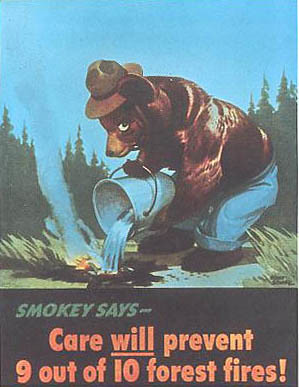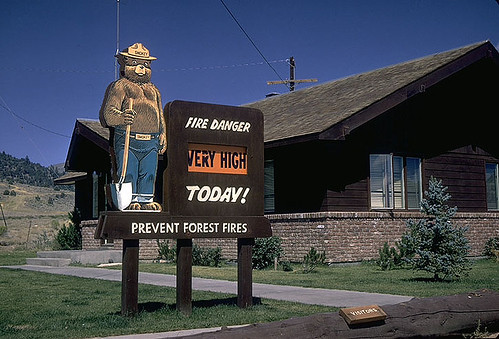
“Remember . . . Only YOU Can Prevent Forest Fires.”
For more than 50 years, that iconic catch phrase grabbed the hearts and minds of generations of children, spurred a series of books, games and gifts, helped to change the face of wildland firefighting and prompted more than one child to grow up to be a forester.
“On Saturday morning’s, I would watch the ‘Farm Report’ just waiting for ‘Lassie’ to come on,” said Glenn Casamassa, a Long Island, New York, native who grew up to become a forester. “Right after the Farm Report I saw this bear talking about forest fires, and it got me thinking about the woods. As a kid, Smokey and his message really stuck in my head.”
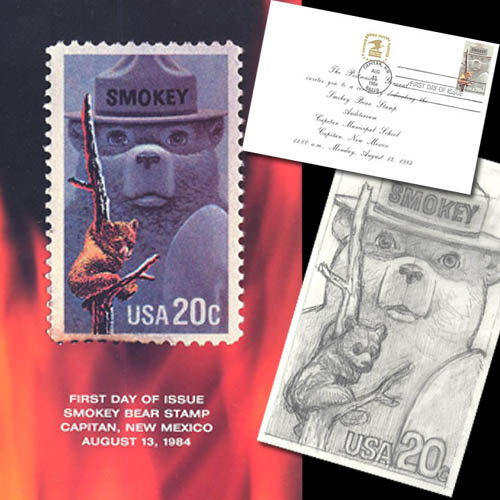
On Saturday, Smokey Bear turns 70 and, after all those years of watching Saturday morning shows featuring a forest ranger as Lassie’s owner, Casamassa is forest supervisor on the Arapaho & Roosevelt National Forests and Pawnee National Grassland in Colorado.
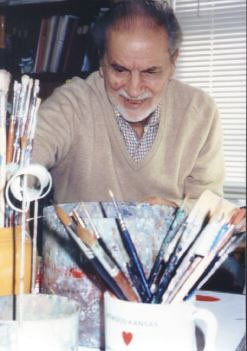
That bear has made lasting impressions on a lot of people. Over the years, his message has changed only slightly. Rather than preventing forest fires we now prevent wildfires. And his looks have gone from cuddly bear to a more humanized rendering to a hard-looking drill sergeant-like persona. In one brief moment in the 1980s, he even appeared as a rap artist.
In his 70th year, Smokey Bear is back to his most popular fashion sporting a pair of blue jeans and wearing his signature hat – a style he adopted long before music producer Pharrell Williams made a similar hat popular this year. His die-hard friendliness and caring persona went towards warm and fuzzy with this year’s series of ad campaigns showing Smokey giving and getting bear hugs.
Smokey Bear’s first public appearance came in 1944 as part of the newly designed wildfire prevention campaign sponsored by the U.S. Forest Service, National Association of State Foresters and Advertising Council. It is now the longest-running public service campaign in Ad Council’s history and Smokey Bear remains a highly recognizable figure.
The character morphed into real-life in 1950 when a devastating fire on the Lincoln National Forest in New Mexico left a bear cub alone and seriously burned. Initially called Hotfoot Teddy by his rescuers, Little Smokey became the living symbol of wildfire prevention and later lived out his life at the National Zoo in Washington, D.C. His rescue and first years at the zoo are documented in a 12-minute film narrated by Hopalong Cassidy, a Western hero portrayed on television and in movies by William Boyd.
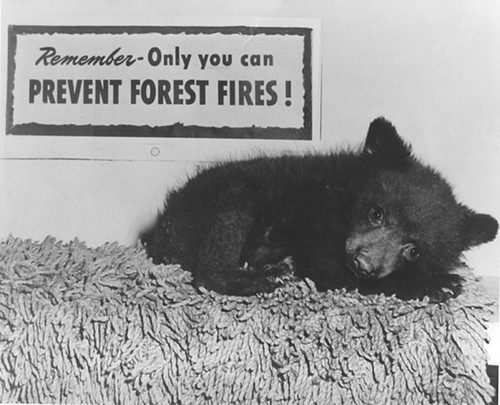
In the 1960s, Rod Serling’s “Twilight Zone” storytelling gives the public service campaign an eerie twist. The ad portrays a family driving home from a cabin. “They’ve driven this road a dozen times and nothing ever happened. But today is different,” Serling says in the video. “Today, Ed will become a killer, and here’s his weapon.” The ad cuts to Ed as he throws a cigarette, which lands in dry grass and starts a fire.
Another vintage ad sadly animates what used to be until “man came and got careless with fire . . . Think before you strike. Put the life out of your campfires before the campfires put the life out of the forests.”
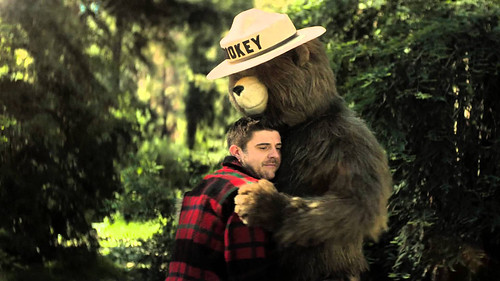
Today’s public service campaigns are similar with a bit of storytelling and a simple message from Smokey Bear. In the bear hug series of 15- and 30-second videos, Smokey Bear surprises a person with a hug after they completed an act that prevented a wildfire.
The Ad Council also worked with the Forest Service and FireAdapted.org on the wildfire preparedness campaign. One video shows an ember floating from a wildland fire and eventually landing near the front step of a home. “You can’t control where that ember will land. Only what happens when it does. Get fire adapted now.” And honorary Forest Ranger Betty White helped spread the wildfire prevention message side-by-side with Smokey Bear in the One Less Spark campaign.
The U.S. Department of Agriculture will host a Smokey Bear birthday celebration Aug. 8 and forests and grasslands have planned events during August.
